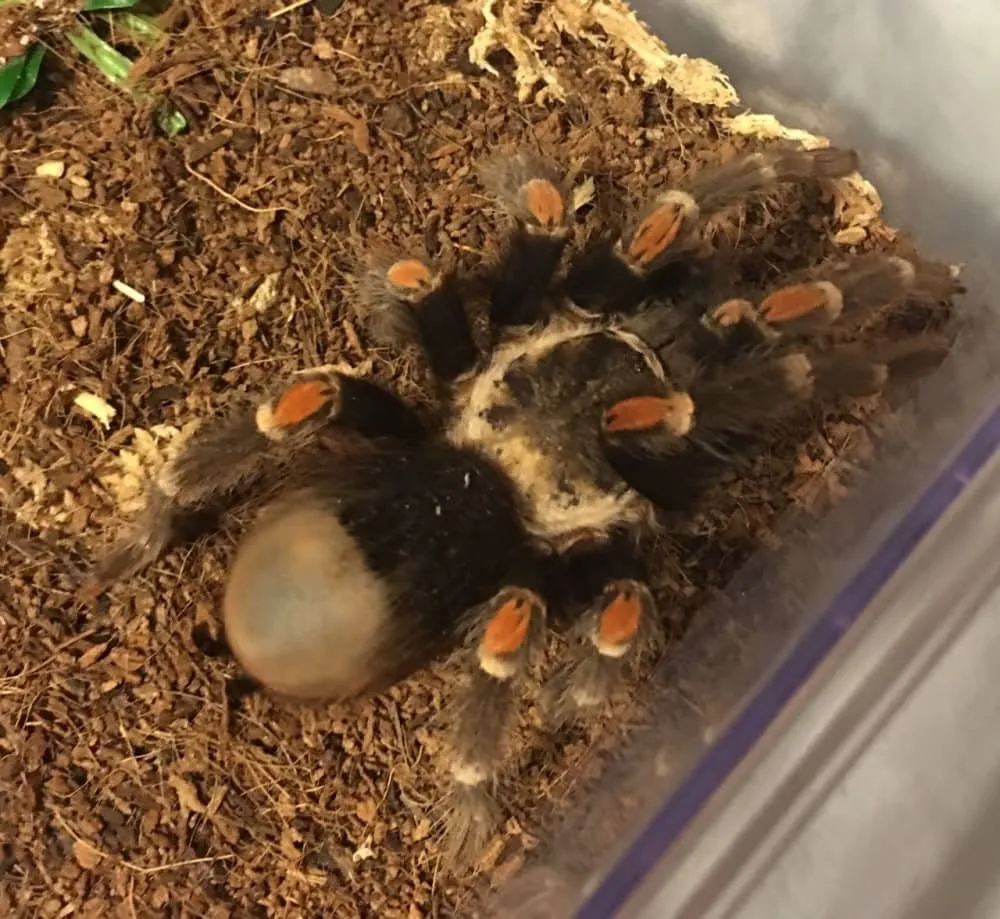What is Molting in Tarantulas
Molting is a vital biological process for tarantulas, a necessary step in their growth and development. As exoskeletal animals, tarantulas have a hard outer shell that doesn’t grow. To increase in size, they must shed this old exoskeleton and create a new, larger one. This process, known as molting, is not just about growth; it also allows the tarantula to regenerate lost limbs, repair injuries, and replace internal structures like the lining of their digestive tract and the book lungs. Understanding molting is crucial for any tarantula owner, as it is a vulnerable time, and complications can be detrimental to the spider’s health.
The Molting Process Explained
The molting process is a complex series of events. It begins with the formation of a new exoskeleton beneath the old one. The tarantula then absorbs fluids, causing the old exoskeleton to split, usually along the carapace (the top of the cephalothorax). The spider slowly wriggles out of its old shell, a process that can take anywhere from a few minutes to several hours, depending on the size and health of the tarantula. After shedding, the new exoskeleton is soft and vulnerable, requiring the tarantula to remain in a safe, undisturbed environment until it hardens. During this time, the tarantula is susceptible to injury and stress, making it crucial for owners to provide a suitable and calm habitat.
Why Tarantulas Molt
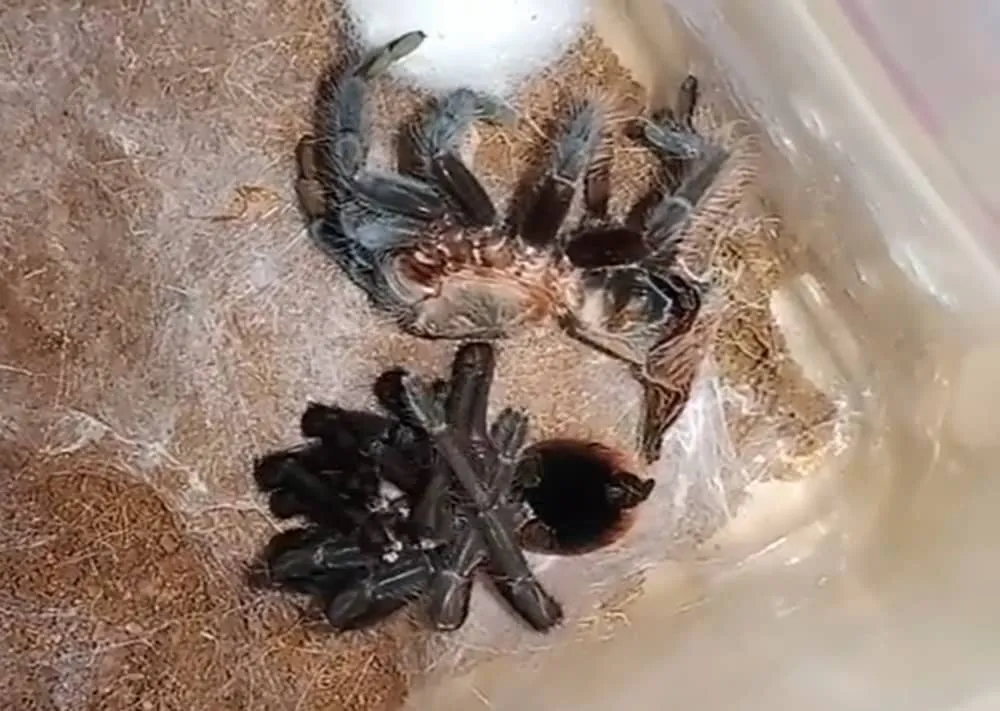
Tarantulas molt for several reasons. Primarily, they molt to grow. Their exoskeleton doesn’t expand, so they must shed it to accommodate their increasing size. Molting also allows for regeneration. If a tarantula loses a leg or a pedipalp (the small appendages near the mouth) during a fight or due to an injury, it can regrow the lost limb during a molt. Furthermore, molting helps to eliminate parasites and other irritants that might have attached to the old exoskeleton. The process also renews internal structures, such as the lining of the gut and the book lungs, essential for the tarantula’s health and function. Essentially, molting is a complete reset, keeping the tarantula healthy and functional.
5 Signs of Tarantula Molting Problems
1 Difficulty Shedding
One of the most common molting problems is difficulty shedding, where the tarantula struggles to remove its old exoskeleton. This can range from minor issues, such as the spider getting partially stuck, to more serious situations where it cannot free itself. The process may take longer than usual, and the tarantula may appear visibly stressed. Failure to completely shed can lead to constriction, limb loss, and ultimately, death. Early detection and intervention are crucial to prevent further complications. This is one of the most visible and concerning signs, requiring immediate attention from the owner.
Causes of Shedding Problems
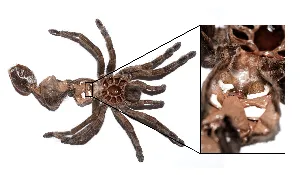
Several factors can cause shedding problems. Low humidity is a common culprit, as it can cause the old exoskeleton to become too dry and stiff, making it difficult to split and shed. Insufficient hydration can also contribute to the problem. Nutritional deficiencies and health problems can also weaken the tarantula, making it more difficult for them to successfully molt. Additionally, a cramped or unsuitable environment can stress the spider, further complicating the shedding process. Any disruption can also cause stress which will affect molting.
Solutions for Shedding Problems
To address shedding problems, increase the humidity levels in the enclosure by misting the substrate or using a larger water dish. Ensure the tarantula has access to fresh water. Providing a hide can also help the tarantula feel secure during the molt. If the tarantula is partially stuck, you can gently assist, but avoid pulling on the exoskeleton, as this can cause injury. A humid hide can assist the process and lessen the difficulty. The key is to address the underlying causes, like poor environmental conditions, and consult with a veterinarian experienced in exotic pets if the issue persists.
2 Leg or Limb Loss
During molting, the new exoskeleton is soft and vulnerable. If the molting process goes wrong, the tarantula can lose legs or other limbs. This can happen if the tarantula gets stuck during shedding and struggles to free itself. The soft limbs can become trapped, twisted, or damaged. Leg or limb loss is a serious issue, affecting the tarantula’s mobility and its ability to hunt and feed. Prompt action and proper care are necessary to help the tarantula recover and minimize the impact of the limb loss. This sign is very noticeable and can be a sign of distress.
Causes of Leg or Limb Loss
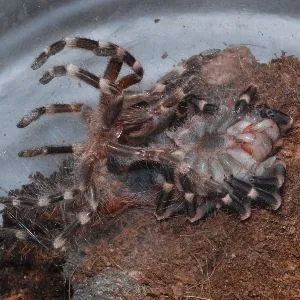
The primary cause of limb loss during molting is difficulty shedding. If the old exoskeleton does not split properly, the tarantula may struggle and strain, resulting in limbs getting caught or torn. Injury during the shedding process, such as from the tarantula bumping into enclosure decorations, can also contribute. Insufficient humidity and dehydration further exacerbate the problem, as the exoskeleton becomes less flexible and more prone to tearing. Environmental factors, like an improperly sized enclosure or lack of appropriate hides, can also increase the risk of injury during a molt.
Solutions for Leg or Limb Loss
If a tarantula loses a limb during molting, provide supportive care. Ensure the enclosure is clean and free of sharp objects to prevent further injury. Provide easy access to food and water, as the tarantula’s mobility may be impaired. The tarantula may not want to eat during or after the molting process so provide nutrient-rich meals when its ready. The lost limb may regrow in subsequent molts; however, this process may take several molts to fully restore the missing limb. Monitor the tarantula closely for infection and consult with a veterinarian if needed. The tarantula may be more vulnerable during this period.
3 Weakness or Lethargy
Weakness or lethargy is another sign of molting problems. A tarantula experiencing a difficult molt may become weak and less active than usual. It may appear sluggish, uncoordinated, or unable to maintain its normal posture. This can be a sign of stress, dehydration, or a general decline in health. These symptoms can also indicate that the tarantula is struggling internally, making the molting process even more difficult. The tarantula will also be more susceptible to environmental stress.
Causes of Weakness or Lethargy
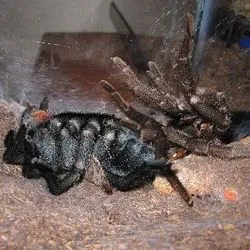
Several factors can contribute to weakness or lethargy during molting. Stress from environmental factors, such as incorrect temperature, humidity, or disturbances, is a common cause. Dehydration, due to insufficient water intake or improper humidity levels, can also weaken the tarantula. Nutritional deficiencies or pre-existing health problems can also make the tarantula more vulnerable during molting. Any underlying medical conditions can affect the molting process and general well-being. In addition, a difficult shed will cause the tarantula to expend more energy.
Solutions for Weakness or Lethargy
To address weakness or lethargy, focus on creating a stable, stress-free environment. Ensure that the temperature and humidity levels are appropriate for the species. Provide fresh water and monitor the tarantula’s hydration. Offer easily accessible, nutritious food. Minimize disturbances by avoiding handling or excessive noise. If the weakness persists, consult a veterinarian experienced in exotic animals, as this could be a sign of an underlying health issue. A vet may also be able to assess the tarantula’s overall condition.
4 Loss of Appetite
A tarantula’s appetite may decrease or disappear completely before, during, or after a molt. This is common, as the tarantula’s energy is focused on the molting process. However, a prolonged loss of appetite, especially if combined with other symptoms, can indicate a problem. A tarantula that is struggling to molt may not eat, leading to weakness and further complications. This is a common symptom that can be an indicator of underlying issues. Owners need to pay careful attention to feeding habits during molting.
Causes of Appetite Loss
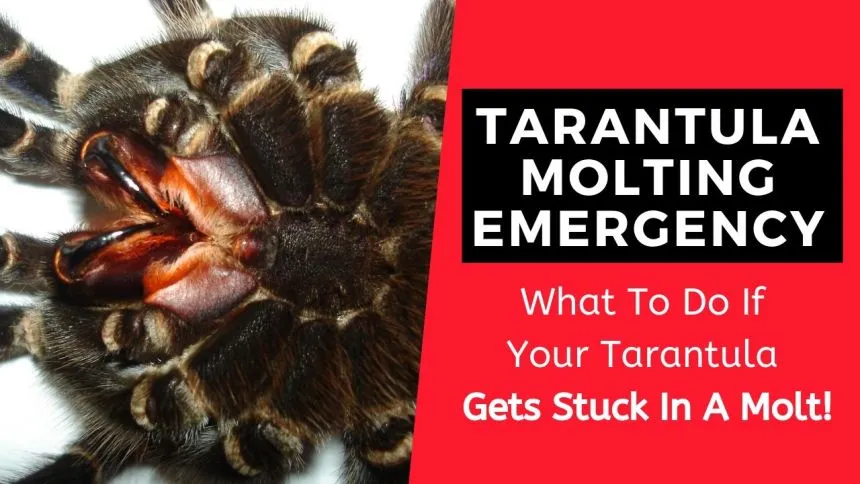
Appetite loss is often a direct result of the molting process itself. The tarantula’s body is focused on shedding its exoskeleton, diverting energy away from feeding. Stress from the environment, such as fluctuating temperatures, low humidity, or excessive handling, can also suppress appetite. Health problems, like parasites or infections, can also lead to loss of appetite. If the tarantula is experiencing pain or discomfort, it may refuse to eat. In addition, improper care, such as a poor diet or environmental conditions, can also result in appetite loss.
Solutions for Appetite Loss
If a tarantula is not eating, address any potential stressors in its environment. Ensure proper temperature, humidity, and a secure hiding place. Offer a variety of food items, such as crickets, mealworms, or roaches, to see if the tarantula has a preference. Monitor the tarantula’s overall health, looking for other symptoms of illness. If the tarantula refuses to eat for an extended period, consult with an experienced veterinarian who can assess the spider and identify any underlying problems. Do not force feed the tarantula, as this can cause more harm than good. Provide the best possible environment and the tarantula will eat when it is ready.
5 Abnormal Posture or Positioning
Unusual posture or positioning can indicate that something is wrong during the molting process. The tarantula may lie on its back for an extended period, struggle to right itself, or exhibit uncoordinated movements. It may also twist its legs or appear contorted. Abnormal posture can be a sign that the tarantula is stuck during shedding, experiencing pain, or suffering from other health issues. This sign can be very alarming to observe. Recognizing these unusual postures is important for any tarantula owner.
Causes of Abnormal Posture

Abnormal posture is often a result of difficulty shedding or stress during molting. If the old exoskeleton doesn’t split correctly, the tarantula may be unable to move or position itself normally. Injury, either during the molt or from previous incidents, can also cause changes in posture. Other causes include dehydration, nutritional deficiencies, and environmental stressors like improper temperature or humidity. Underlying health issues, like infections or parasites, may also manifest as abnormal posture. The tarantula will find itself in distress.
Solutions for Abnormal Posture
If a tarantula displays abnormal posture, carefully assess the situation. Ensure the enclosure has the appropriate environmental conditions. Provide adequate humidity and fresh water. Observe the tarantula for any other signs of distress, such as difficulty breathing or loss of appetite. Avoid disturbing the tarantula unnecessarily. If the tarantula is struggling to molt, you can gently assist, but avoid pulling on the old exoskeleton. Consult an experienced veterinarian for a diagnosis and treatment plan if the abnormal posture persists or is accompanied by other concerning symptoms. It is important to try and keep the environment stress-free.
How to Prevent Molting Complications
Maintaining Optimal Humidity
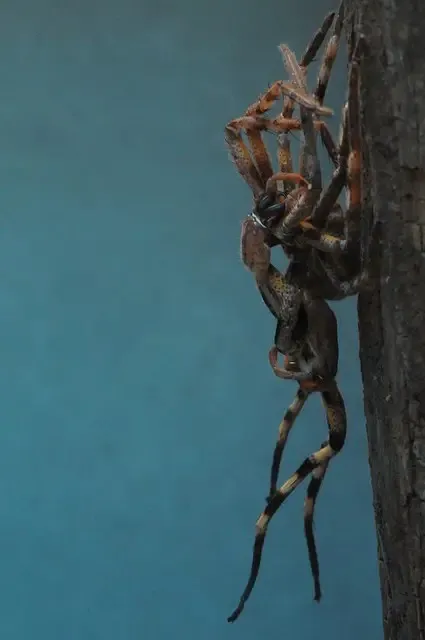
Maintaining proper humidity is crucial for successful molting. The ideal humidity level varies depending on the tarantula species, so research the specific requirements of your pet. Generally, a humidity level between 60-80% is appropriate for many species. Monitor humidity levels with a hygrometer and adjust as needed. Provide a water dish with fresh water to help maintain humidity, and mist the enclosure regularly, particularly during the molting phase. Avoid over-misting, which can lead to mold growth and other health issues. Correct humidity can help to soften the old exoskeleton.
Providing a Suitable Substrate
The substrate, or bedding, in the enclosure should be appropriate for the tarantula’s needs. Choose a substrate that retains moisture but is not overly damp, which could lead to mold or bacterial growth. Common substrates include coconut fiber, peat moss, and vermiculite. The depth of the substrate should be sufficient for burrowing species to create their dens, providing a sense of security. Avoid sharp or abrasive substrates that could injure the tarantula during the molt. Ensure the enclosure is properly ventilated to prevent the buildup of moisture. The substrate should assist with the molting process.
Avoiding Disturbances During Molting
During the molting process, tarantulas are particularly vulnerable to stress. It’s essential to minimize any disturbances. Avoid handling the tarantula, especially during premolt and the molting itself. Refrain from making loud noises or vibrations near the enclosure. Ensure the enclosure is in a quiet area, away from high traffic or direct sunlight. Do not disturb the enclosure unless absolutely necessary, such as for providing water or food. Create a stable and consistent environment, as this will make the molting process far easier. Providing a stable environment is crucial for the tarantula.
What to Do if Problems Arise
If you notice any signs of molting complications, it’s crucial to act promptly. First, assess the situation carefully and try to identify the cause of the problem. If the tarantula is partially stuck, you can gently assist, but never pull on the exoskeleton. Increase humidity levels if necessary. If the tarantula is struggling to shed, you can gently assist, but avoid pulling on the old exoskeleton. Consult with an experienced veterinarian or a tarantula expert for guidance. Be patient and avoid making any sudden changes or actions that might further stress the tarantula. Keep the enclosure clean and make sure the tarantula has access to fresh water.
Molting is a natural and vital process for tarantulas. However, complications can arise. Being aware of the potential problems and knowing how to prevent and address them can help ensure your pet’s health and well-being. By understanding the process and recognizing the signs of trouble, you can provide the best possible care for your tarantula and ensure it thrives for years to come.
